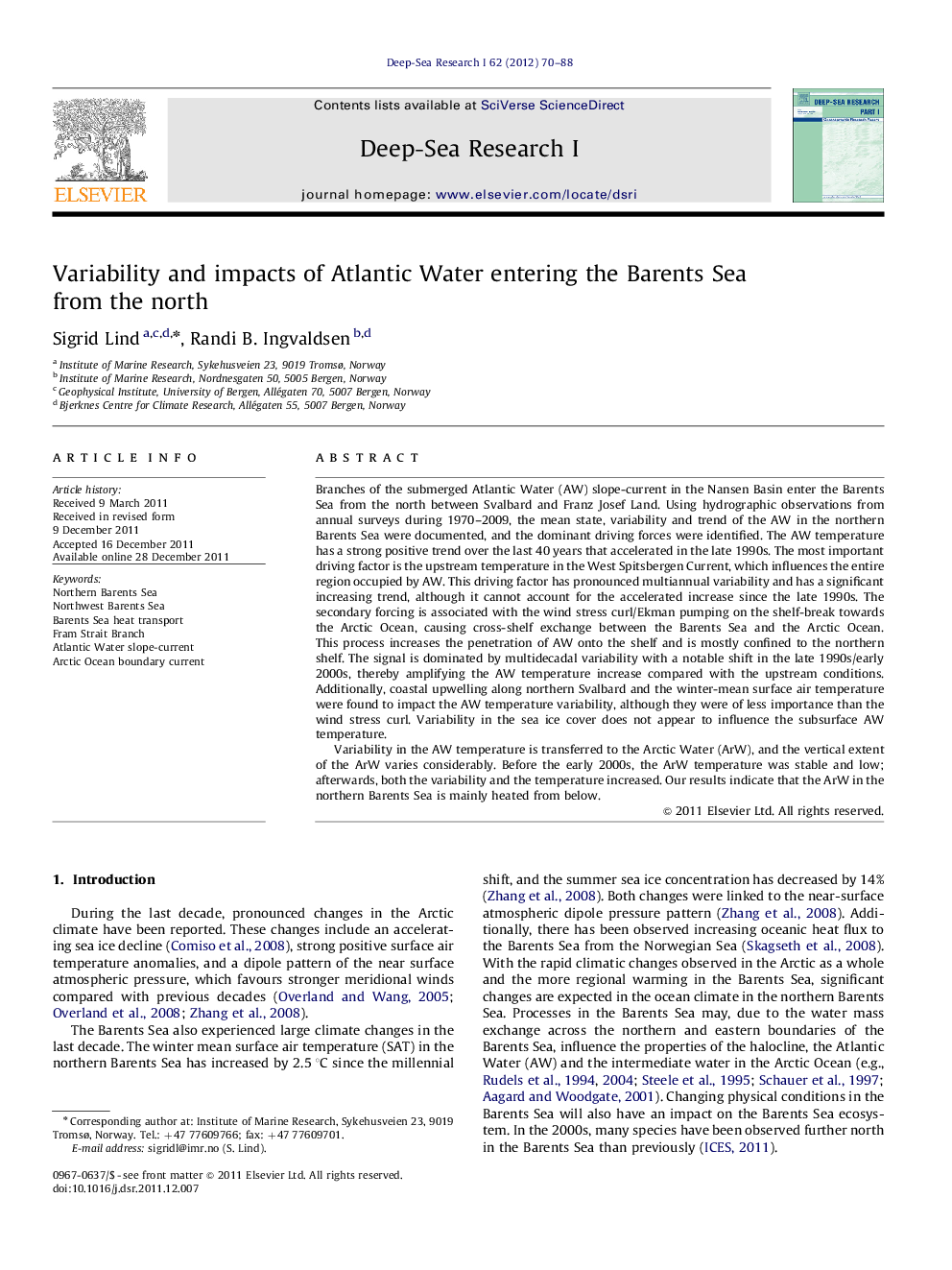| کد مقاله | کد نشریه | سال انتشار | مقاله انگلیسی | نسخه تمام متن |
|---|---|---|---|---|
| 4534786 | 1626368 | 2012 | 19 صفحه PDF | دانلود رایگان |

Branches of the submerged Atlantic Water (AW) slope-current in the Nansen Basin enter the Barents Sea from the north between Svalbard and Franz Josef Land. Using hydrographic observations from annual surveys during 1970–2009, the mean state, variability and trend of the AW in the northern Barents Sea were documented, and the dominant driving forces were identified. The AW temperature has a strong positive trend over the last 40 years that accelerated in the late 1990s. The most important driving factor is the upstream temperature in the West Spitsbergen Current, which influences the entire region occupied by AW. This driving factor has pronounced multiannual variability and has a significant increasing trend, although it cannot account for the accelerated increase since the late 1990s. The secondary forcing is associated with the wind stress curl/Ekman pumping on the shelf-break towards the Arctic Ocean, causing cross-shelf exchange between the Barents Sea and the Arctic Ocean. This process increases the penetration of AW onto the shelf and is mostly confined to the northern shelf. The signal is dominated by multidecadal variability with a notable shift in the late 1990s/early 2000s, thereby amplifying the AW temperature increase compared with the upstream conditions. Additionally, coastal upwelling along northern Svalbard and the winter-mean surface air temperature were found to impact the AW temperature variability, although they were of less importance than the wind stress curl. Variability in the sea ice cover does not appear to influence the subsurface AW temperature.Variability in the AW temperature is transferred to the Arctic Water (ArW), and the vertical extent of the ArW varies considerably. Before the early 2000s, the ArW temperature was stable and low; afterwards, both the variability and the temperature increased. Our results indicate that the ArW in the northern Barents Sea is mainly heated from below.
► We describe the Atlantic Water inflow to the Barents Sea from the north and its impact on the Arctic Water.
► We identify the driving factors of multiannual temperature variability of the Atlantic Water.
► Upstream Atlantic Water temperature west of Spitsbergen is the most important driving factor.
► Wind stress on the northern Barents Sea shelf is the second most important driving factor.
► The wind stress may induce cross-shelf exchange of Atlantic Water through open ocean Ekman pumping.
Journal: Deep Sea Research Part I: Oceanographic Research Papers - Volume 62, April 2012, Pages 70–88